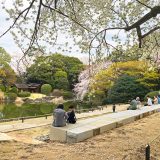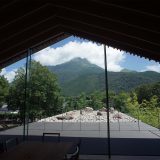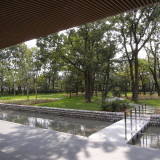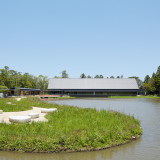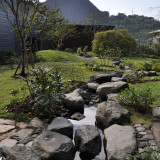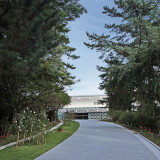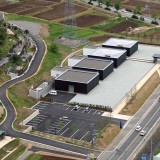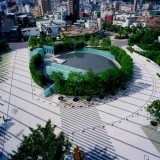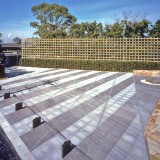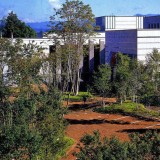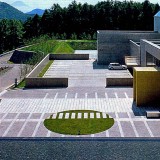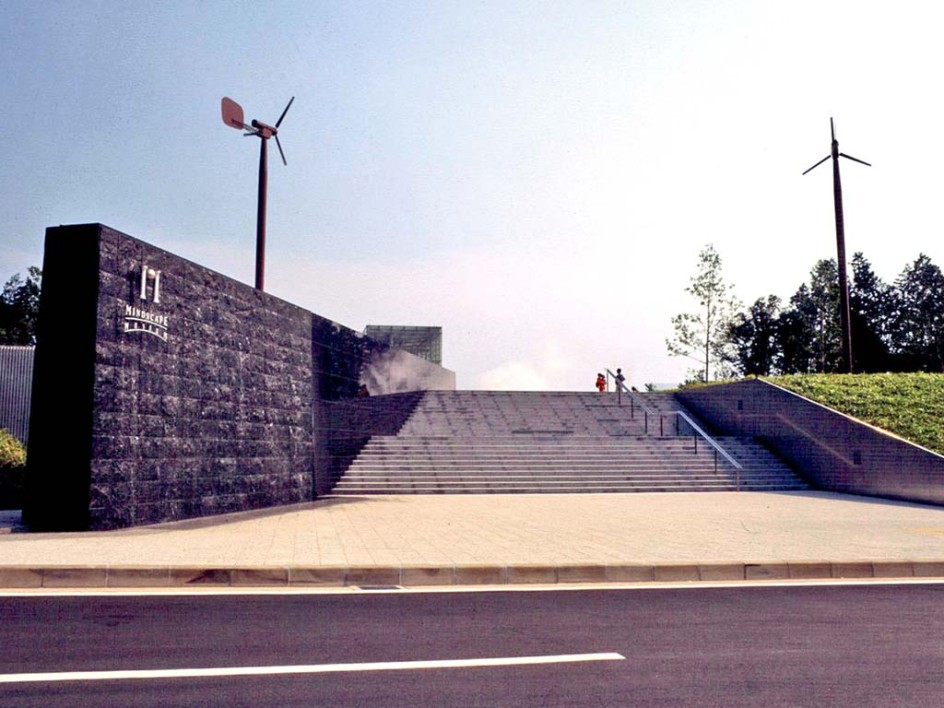
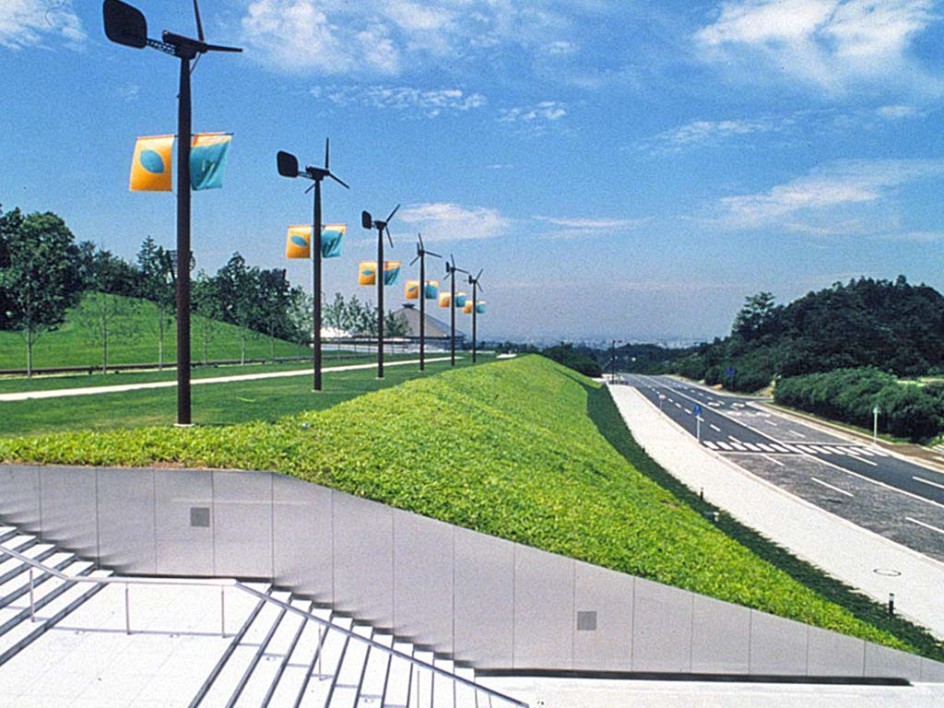
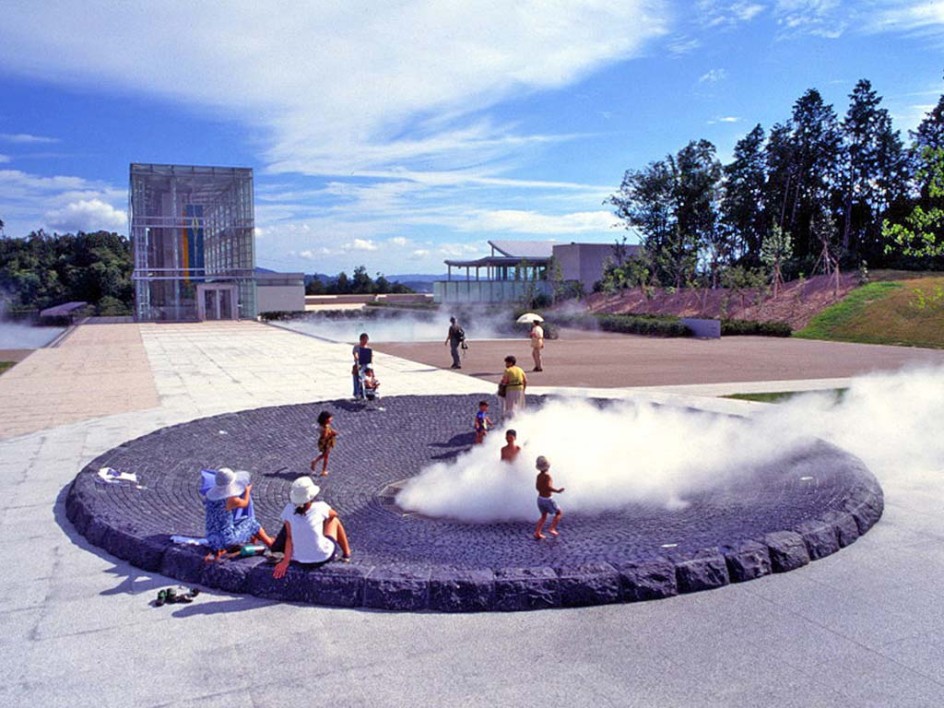

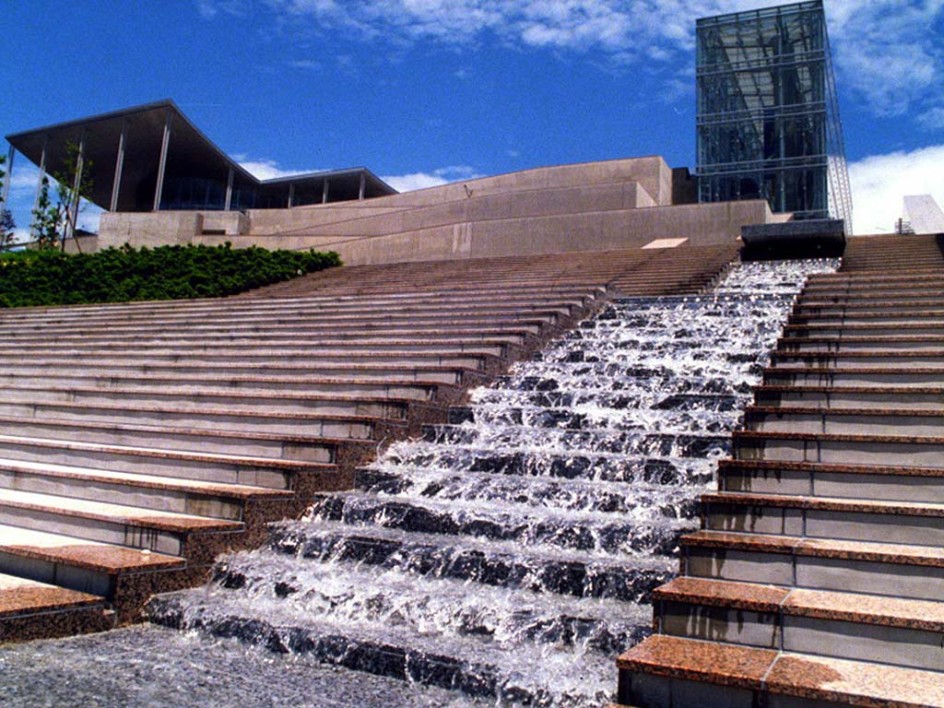
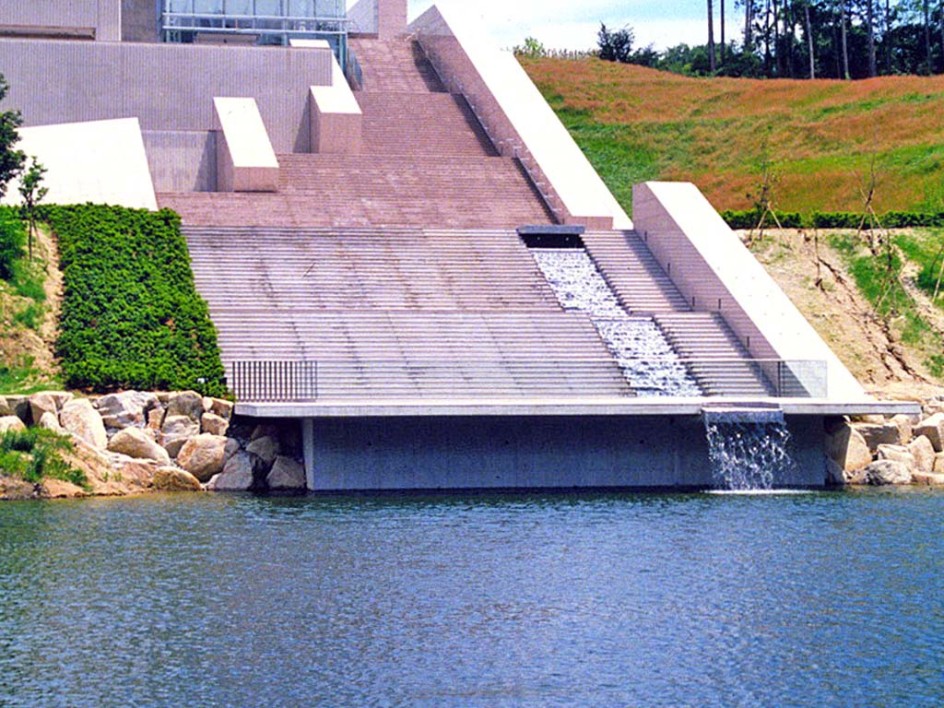
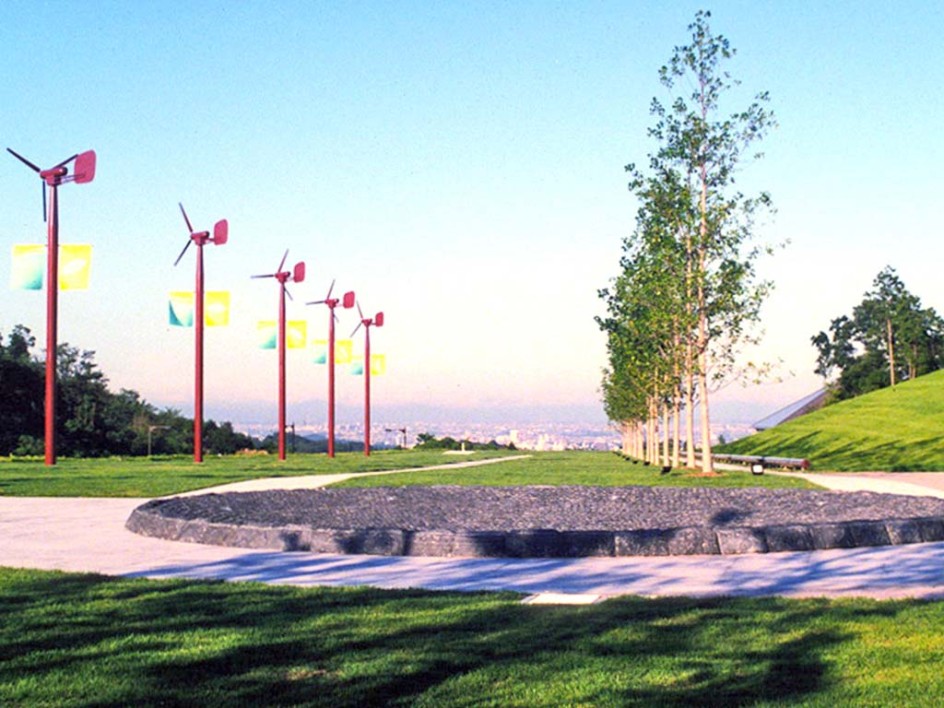
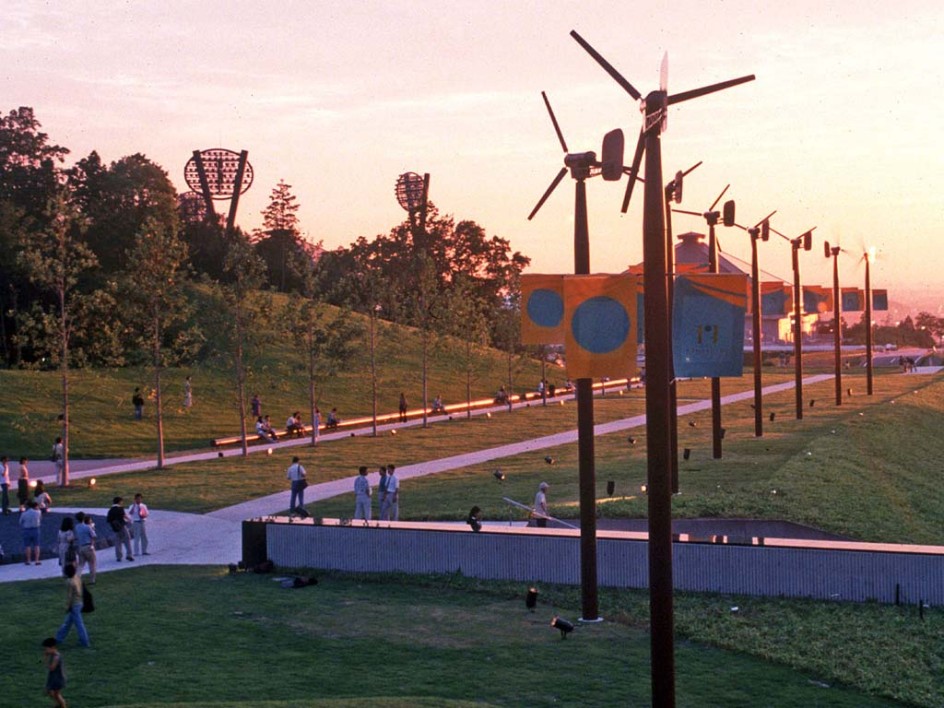
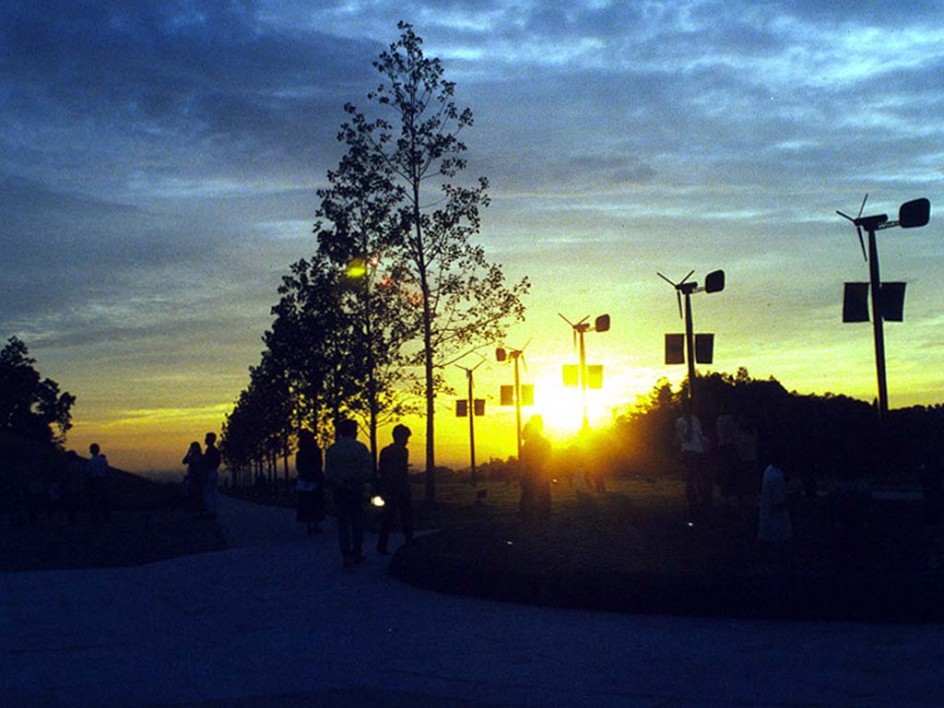
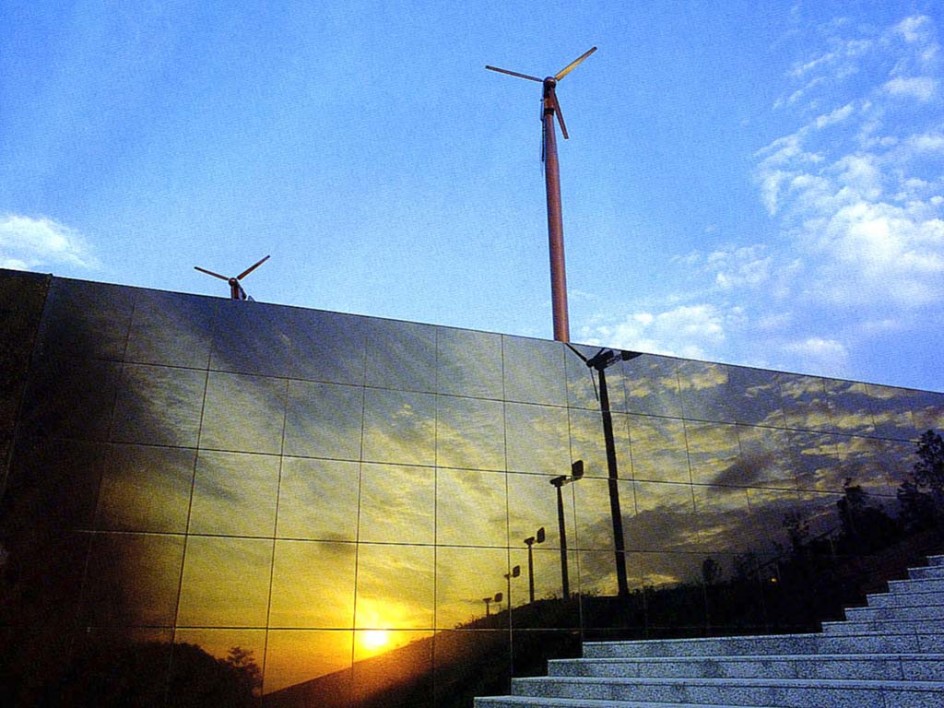
Realizing that the special features of the location for this museum were the line of the mountains, the valley and the slopes, we gave greater significance to the two established spatial axes through the media which are representative of each of these features. The axis defined by the mountain ridge stops the movement of air and is referred to as the ‘wind axis’ because it can be sensed through various media. The axis, which crosses the wind axis, is known as the ‘water axis’ and, as the name implies, is defined by a continuous water course with various expressive futures along it created by the changes of height across the site before it finally drains into a lake on the south side.
With the wind axis, eight electric power generating wind mills, an avenue of tulip trees (liriodendron tulipifera), sasa veitchii on the banks and a mist bowl create various expressions as they catch the wind along the straight park road that follows the line of the mountain ridge. The origin of the water axis on the other hand is the point where the water falls over the wall along the approach. It then passes through the mist bowl that was placed at the intersection of the two axes, then on through two shallow pools where it produces ripples before cascading down a series of stapes to the surface of the lake.
ADDRESS:Okazaki,Aichi
SCALE:30,000m2
COMPLETION:1996.03
BUSINESS OWNER:Okazaki City
COLLABORATION / ARCHITECT:A.KURYU ARCHITECT & ASSOCIATES Co.,Ltd.





